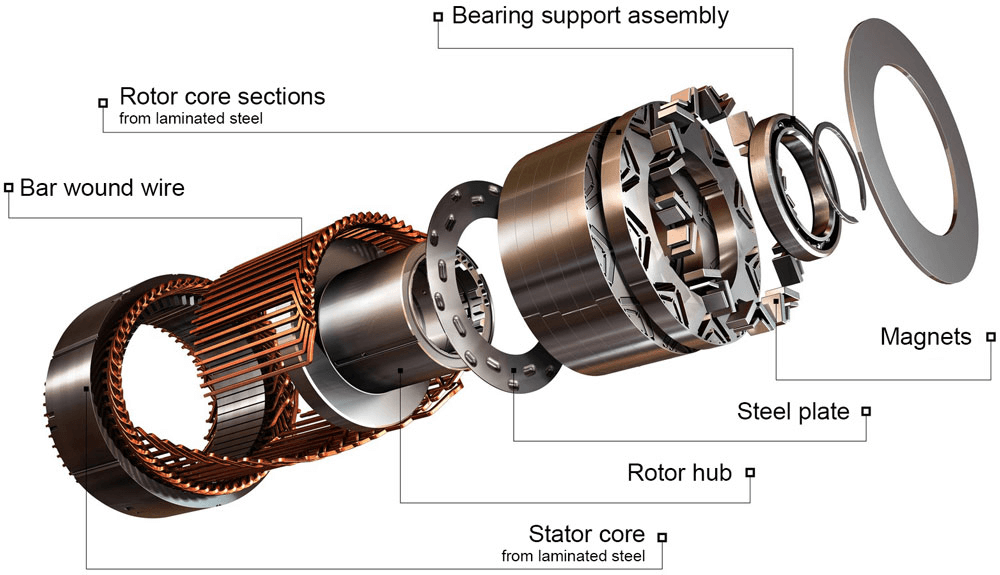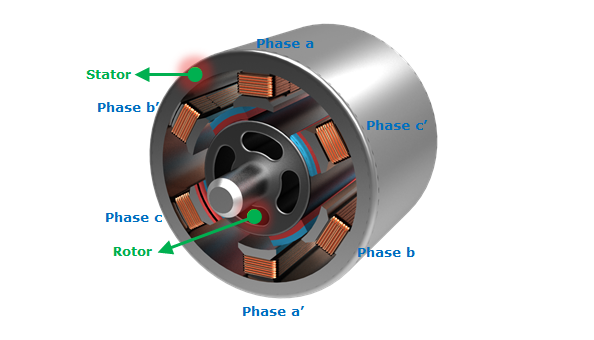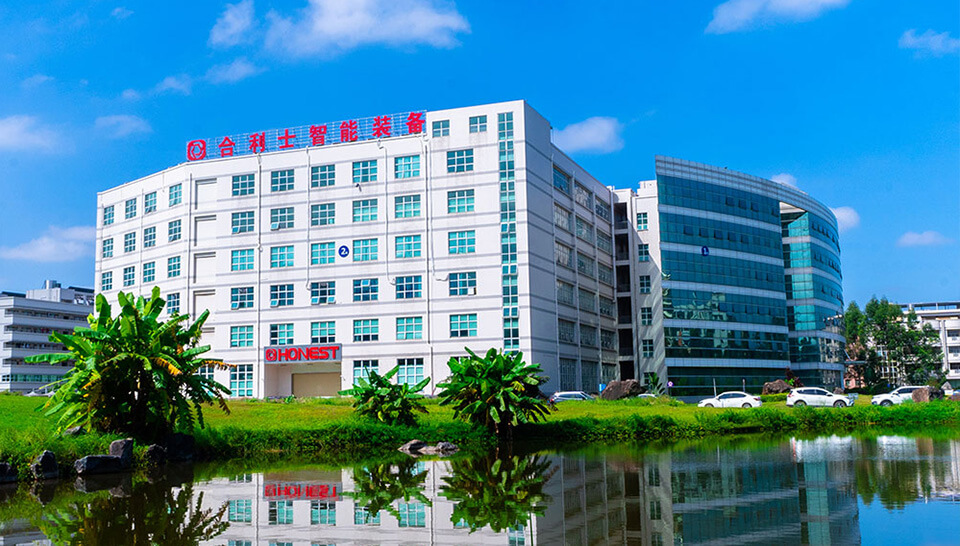The permanent magnet synchronous motor is composed of stator, rotor and end cover. The stator is basically the same as the ordinary induction motor, and adopts a laminated structure to reduce the iron loss of the motor during operation. The rotor can be made solid or laminated. The armature winding can be concentrated full-pitch winding, distributed short-pitch winding and unconventional winding. The permanent magnet motor drive system has the following features:
1. Simple and Compact Structure
Permanent magnet synchronous motors use permanent magnets to generate air gap magnetic fields. They do not use excitation coils like commutator motors, nor do they use the excitation component of stator current like induction motors. They have simple structures, low losses, and high efficiency. Permanent magnet synchronous motors can be divided into two types: surface mounted permanent magnet synchronous motors (SPM) and internal permanent magnet synchronous motors (IPM).

The domestically developed permanent magnet synchronous motor is an internal permanent magnet synchronous motor (IPM) with permanent magnets embedded in the rotor core. For IPM motors, since the permanent magnets are embedded in the rotor, the core provides better protection for the permanent magnets, which can effectively prevent centrifugal force, corrosion, and other damage to the permanent magnets that may occur during the production process. IPM motors have strong magnetic field salient polarity, and can fully utilize the reluctance torque through control to obtain higher torque output. At the same time, due to the salient pole effect, the weak magnetic control range of the motor is greatly increased, thereby greatly increasing the speed range of the motor.
2. High Efficiency and High Power Factor
Permanent magnet synchronous motors combine the advantages of traditional asynchronous motors and electrically excited synchronous motors, and can obtain speed regulation characteristics similar to or even exceeding those of DC motors, with comprehensive performance improvements.
Compared with asynchronous motors, permanent magnet synchronous motors do not require reactive excitation current, can significantly improve power factor, reduce stator current and stator copper loss, and have no rotor copper loss during stable operation. Due to the reduction in total loss, the capacity of the motor cooling system is reduced, thereby reducing the corresponding additional loss. Therefore, its efficiency is 2~15 percentage points higher than that of asynchronous motors of the same specifications.
3. Strong Dynamic Response and Overload Capacity
Permanent magnet synchronous motors use permanent magnets to generate air gap magnetic fields. They do not use excitation coils like commutator motors, nor do they use the excitation component of stator current like induction motors. They have simple structures, low losses, and high efficiency. Permanent magnet synchronous motors can be divided into two types: surface-mounted permanent magnet synchronous motors (SPM) and internal permanent magnet synchronous motors (IPM).

The domestically developed permanent magnet synchronous motor is an internal permanent magnet synchronous motor (IPM) with permanent magnets embedded in the rotor core. For IPM motors, since the permanent magnets are embedded in the rotor, the core provides better protection for the permanent magnets, which can effectively prevent centrifugal force, corrosion, and other damage to the permanent magnets that may occur during the production process. IPM motors have strong magnetic field salient polarity, and can fully utilize the reluctance torque through control to obtain higher torque output. At the same time, due to the salient pole effect, the weak magnetic control range of the motor is greatly increased, thereby greatly increasing the speed range of the motor.
4. Small Size and Light Weight
In recent years, with the continuous application of high-performance permanent magnet materials, the power density of permanent magnet synchronous motors has been greatly improved. Compared with asynchronous motors of the same speed and capacity, the size and weight are greatly reduced, making them applicable on many special occasions.
5. High Reliability and Low Operation and Maintenance Costs
Compared with DC motors and electrically excited synchronous motors, permanent magnet synchronous motors have no brushes, simplifying the structure and increasing reliability.
The direct drive system eliminates the reducer, reduces the failure points, and improves system reliability. It also reduces operating and maintenance costs.
6. SPM Motor Drive System Assembly
During the assembly of SPM motors, HONEST Automation leverages years of experience to provide customized solutions that ensure every aspect meets the client's needs. From the motor's basic structure to the precise tuning of the motor control system, our team is dedicated to delivering efficient and reliable drive systems. We have successfully delivered SPM motor drive systems for multiple industry clients, helping them improve product performance and production efficiency.

Whether for large-scale production or small-batch customization, HONEST Automation can provide the most suitable solution. If you're considering applying SPM motor technology to your project, feel free to contact us anytime. We offer professional technical support and services to optimize the performance of your motor systems. Contact HONEST today to explore more customized solutions!






